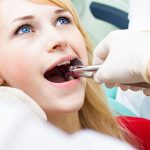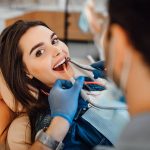
Ergonomics Have Their Own Place in Dentistry
February 22, 2025
“Role of Digital Tools in Modernization of Dental Clinics and Increasing Treatment”
February 22, 2025Introduction
No doubt, like other medical fields, dentistry is not static and has made some large strides in technology and innovations. It is hard to imagine what has not been seen, at least recently, in the way technologies affect improvements in many dental devices. From advanced diagnostic tools to sophisticated devices for treatment, smart dental tools are changing how things get done in dentistry so that procedures can now be very precise, far less invasive, and more rapidly performed than ever before.
Smart tools are the fixtures and fittings of dentistry with the touch of advanced technology such as artificial intelligence (AI), machine learning, sensors, and wireless technology. All innovations aim at attaining maximum efficiency in dental treatments while improving patients’ safety, comfort, and outcomes. This article looks to the future of dental devices in light of all the new innovations that will change how we deal with the treatment and the many ways that tooth doctoring will be expanded, both for the benefit of clinicians and their patients.
The advancement of intelligent tools in dentistry
The integration of smart tools into dentistry refers to an extremely wide class of devices and technologies that rely on data, connect, and automate to increase the efficacy and accuracy of treatments. These tools can collect and analyze data real-time in the patients, allowing the findings to create more informed decisions with optimizing approaches and reducing one’s risk of errors.
For example, AI-powered diagnostic tools can catch problem areas, such as cavities or gum diseases, earlier than they can be observed by the naked eye. With time, high-resolution digital X-rays come up within seconds through these smart sensors and are thus able to lessen multiple exposures to X-rays to avoid radiation for patients.
A highly innovative invention is an intraoral scanner, which replaces regular molds used in impressions with digital impressions of teeth. Such discovery would improve patient comfort by replacing messy, uncomfortable impression materials with something that will be faster and more accurate.
Smart Tools Are Changing the Face of Patient Treatment
1. Enhanced Diagnostics and Precision
One of the most significant ways in which smart tools have affected dentistry is in terms of diagnostics and treatment precision. Artificial intelligence and even machine learning algorithms are now being integrated into dental diagnostic machines to bring an even finer detection of dental conditions.
For instance, such AI-driven systems could analyze dental X-rays, CT scans, and other imaging results, and explore the possible chances of diseases such as cavity and periodontal problems, or in even earlier stages, oral cancer. All this would enable the dentist to tailor his or her treatment prescriptions much more accurately with respect to the clinical problems before they become more serious conditions. Such tools could also help in formulating treatment plans by simulating various treatment outcomes tailored to a given patient’s needs.
2. Minimal Interventional Techniques
Smart dental instruments facilitate more conservationist treatment options, which must have been a great milestone in modern patient care. An example of this would be laser technology that uses increasingly many applications in the treatment of soft-tissue problems, such as treating gum disease, or scraping decayed tooth material. It reduces the amount of tissue destructed, spends less time healing, and has much lower post-operative discomfort.
Another is robotic surgery instruments, which have become more frequently used. Robotic surgery systems have entered the arena of complex procedures in which a specialized implant is placed. They are opened for accurate drilling and placed within the finished holes unerringly, eliminating human error probability to improve dental implant success.
3. Improved Patient Satisfaction
Smart tools would potentially also enhance general satisfaction with patient experience. Indeed, many of these smart dental applications will not necessitate any experience of discomfort or anxiety through therapeutics; intraoral cameras provide images of the mouth in real-time for the patients to see, possibly helping them understand why treatments are developing from their point of view, and more involved with their mouth health.
Also, this equipment allows users to have more accurate, effective results in a shorter appointment time, thereby minimizing the amount of time spent in the dentist’s chair. This makes it a much more comfortable visit, as well as a more positive and stress-free one.
4. Access to Real-Time Monitoring and Personalization
Another major benefit with smart tools in dentistry is real-time monitoring and adjustment of treatment plans. For example, a combination of digital impressions and technology in 3D printing makes it possible to fabricate individualized dental appliances: shells, bridges, or dentures that accurately fit with a patient’s unique oral structure. Hence, wearing these makes their restorations more comfortable, fitted better into their mouths, and increases patient satisfaction.
Also, smart tools can be employed in real-time monitoring during procedures or fill up cavities with sensor monitoring pressure or temperature during filling of root canal treatment. This helps the dentist to keep adjusting their technique as necessary so that optimum outcomes are ensured for the patient.
The Future of Smart Dental Equipment: What, then?
At this time when technology gets advanced fuller and fuller, the future is gleaming for dental equipment to date. One of the most interesting promises is the implementation of AI and robotics in dental surgery. It has the potential of drastically cutting down on human errors while allowing for precise surgical procedures, as well as quickly recuperating times.
And the convenience of using tele-dentistry through the smart devices makes it easier to operate and consult remotely instead of coming to the facility for check-up and follow-up. The technology of smart cameras, sensors without the face-to-face of the dentist, and communication platform let the patients be monitored concerning their oral health care recommendation. This is extraordinarily advantageous in areas where dental access is limited.
Moreover, there is research undertaken so far for the more advanced developing materials for restoration, e.g., self-healing composites, bio-compatible materials which aim to mimic tooth-like natural properties. These developments are foreseen to yield more durable restorations and better oral health outcomes for the patient.
How X-Forceps is Teleporting the Future of Dental Equipment
Future advancement in dental equipment is very dynamic, especially with the coming smart tools as X-Forceps. It would help to change the performance of dental procedures via state-of-the-art technology such as pressure sensors, cameras, and real-time monitors. These new things will allow greater precision and precision, improved health results, and with lesser hazardous injuries. X-Forceps helps apply the force without collateral damage to adjacent teeth and surrounding tissues. The more frequent smart tools like X-Forceps will then invade the dental setting to make even more procedures efficient and comfortable for the patients as well as the professionals.
Ultimately speaking
As smart tools usher in completely new ways of diagnosing, treating, and caring for patients, the reality of future dental equipment is anticipated to be smart tools. Very soon, there will be more accurate, less invasive, and more personalized modalities in the provision of dental health services through AI, robotics, lasers, and other modern advanced technologies. All this would show that a better experience as well as treatment outcome and recovery will be presented to the patient. The advancement of technology shall command yet further exciting prospects in dental equipment, making dental care more effective, accessible, and above all comfortable to patients throughout the world.

